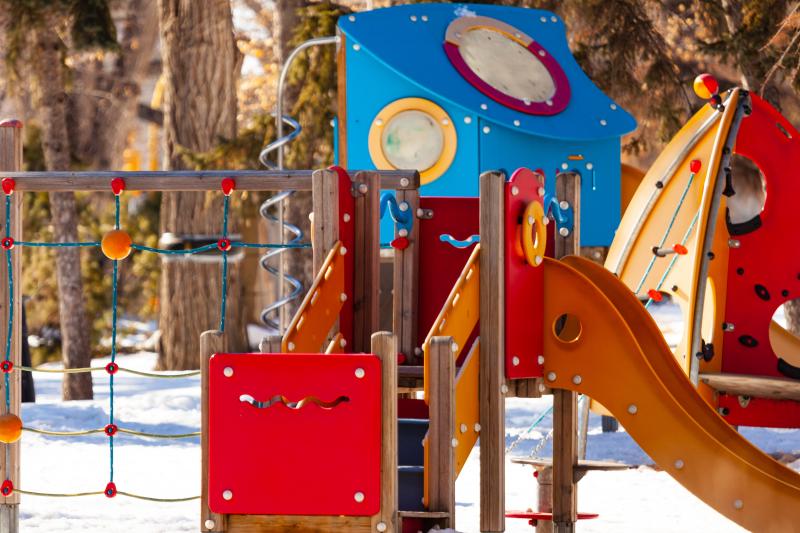Introduction

Example of a playground.
Photo by Grant Criddle via Pexels
Children are a decisive factor for the successful development of cities. Because cities and their infrastructures can only survive in the long term with young citizens who will later live permanently in their home city. Reason enough to address the needs and wishes of this target group early on and to give them a say.
We often decide for children instead of with children. As a frontline worker you know how important it is to involve children in decision-making processes – especially when it comes to places for children themselves. Using the example of a new concept for a playground, we would like to work out with you how the target group of children can already be included in participation processes.
Task

Children design their dream playground.
Photo by Vanessa Loring via Pexels
A new playground is to be built. Instead of simply building it and developing it from an institutional point of view, as is often the case, citizens and especially the target group of children are to be actively involved in the design process. Your task is to involve the citizens in this design process. Come into conversation with them, conduct workshops and develop a concept for a new playground together.
In this exercise you will learn
- how needs and requirements are identified
- how to involve children in the design process
- how communication with different stakeholders can succeed.
Process
This exercise is about reaching out to the different target groups, listening to their views, opinions and wishes and incorporating them into the planning. In the resources, use the document Process for identifying needs when redesigning a playground. Here we explain step by step who you could talk to and how to bring different stakeholders together.
As children are of central importance in this topic, it is incredibly important to meet them at eye level and to take on board and implement their views in an appreciative manner. Use your own experience or that of your colleagues in the field of children's and youth work. The core of this task is to develop a concept together. Listen to Mara Mintzer who describes how the city of Boulder in Colorado, USA included children into the design process of the city in the video We let kids design our city - here is what happened. Learn more about the process, see the amazing results and become inspired on how to work with children on a childfriendly area in your city.
To prepare for the process we'd like you to have a look at the Community Tool Box website that you can find in the link section. Here you will find useful tips on how to prepare and run a participation workshop (chapter 12) to help you with the implementation.
In this module, as different stakeholders are to engage in conversation with each other, problem-solving skills are very crucial, in addition to actively listening and hearing each group. Read chapter 16 in the Community Tool Box just presented to prepare for this task and to learn methods for purposeful communication with different groups and to enhance your facilitation skills.
Conclusion
With children for children is the central approach of this exercise. As a frontline worker, it is important to involve the respective target group in your project ideas. To stimulate participation processes, communication at eye level is crucial. Listen actively to your target group and connect different partners to implement an idea together. Use workshops to gather and organise different ideas.
You might also use methods like Planning for Real to move your ideas forward. Our methodological handbook shows different approaches and examples where citizen participation and new projects have been successfully implemented.
Evaluation
Learning Objectives
- Users are aware of the importance of involving the target group of children in planning processes and know methods and procedures to involve different stakeholders and link their views.
Knowledge
- Participants know about the function and importance of playgrounds in general.
- They have gained knowledge about children's needs (in urban spaces).
- They have learned methods for conducting public participation workshops.
Skills
- Participants can identify children's needs and requirements for playgrounds.
- They know how to communicate with different stakeholders.
Attitude
- Participants are able to bring together and develop the requirements, needs and demands of different target groups for playgrounds.
- They can involve children in the design process.
Resources
Click each section below to see all resources available.
Resources
Click each section below to see all resources available.






